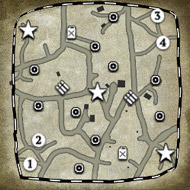I really think its stats are fine, it just comes out too late. So reducing it to 2 CP would be a good solution.
I don't think that would cause any problems either because it certainly isn't a unit that would drive the complete Soviet army off the field. It doesn't deal problematic amounts of damage even when no counter is around and at 2 CPs getting counters against it certainly isn't a problem. Guards or any of the AT guns will do just fine.
Livestreams
 |
|
|
44 | ||
 |
|
|
639 | ||
 |
|
|
16 | ||
 |
|
|
14 |
Ladders Top 10
-
#Steam AliasWL%Streak
- 1.46067.873+2
- 2.776130.857+1
- 3.397210.654+2
- 4.327117.736+4
- 5.12357.683+2
- 6.325146.690-1
- 7.856232.787+3
- 8.333131.718-1
- 9.735445.623+2
- 10.403296.577+4
Replay highlight
VS
-
 cblanco ★
cblanco ★ -
 보드카 중대
보드카 중대
-
 VonManteuffel
VonManteuffel -
 Heartless Jäger
Heartless Jäger

Einhoven Country


Honor it
15
Download
2468
Board Info
587 users are online:
587 guests
0 post in the last 24h
6 posts in the last week
22 posts in the last month
6 posts in the last week
22 posts in the last month
Registered members: 61050
Welcome our newest member, noithatanhduy
Most online: 2195 users on 29 Sep 2025, 11:39 AM
Welcome our newest member, noithatanhduy
Most online: 2195 users on 29 Sep 2025, 11:39 AM



 Oschi
Oschi




